Family Values in the Movie “A Quiet Place”: A Semiotic Approach
on
p-ISSN: 2528-5076, e-ISSN: 2302-920X
Humanis
Vol 24.4 Nopember 2020: 339-349
DOI: https://doi.org/10.24843/JH.2020.v24.i04.p01
Terakreditasi Sinta-4, SK No: 23/E/KPT/2019
Family Values in the Movie “A Quiet Place”: A Semiotic Approach
Ni Putu Ayuniantari*, Eunike Iona Saptanti, Eunike Serfina Fajarini LSPR Communication and Business Institute, Jakarta
Jakarta, DKI Jakarta, Indonesia *Corresponding Author
Abstract
There are only few commercially successful horror movies over fifty years since 1970s that win many awards. One of many horror films released in 2018 that left deep impression for audiences is “A Quiet Place”. McClintock (2018) claimed that the movie has earned more than $300M globally, making strides toward becoming one of the biggest-grossing original scary movies ever. “A Quiet Place” is a silence movie directed by John Krasinski. Because of its silence and quietness, the audiences were forced to focus on the nonverbal signs in the movie. The theme of this movie was family values. One of many important films is mise –en-scene as this communicates indirectly to the audiences. The aim of this study was to know how the theme “Family Values” was visualized in the movie. Using qualitative approach and Semiotics analysis method, this study focused on how the signs and mise-en-scene in the film were interpreted based on the researchers’ interpretation using Metz’ Grand Syntagmatique (1974). This study was a desk research and the data were obtained from selected scenes of the movie. The results showed that there were five syntagma category used in the film; i.e. autonomous shot, episodic sequence, scene, alternate syntagma, and descriptive syntagma. The signs that were presented in the film were arranged by using those five syntagma to show the audience about the family value in the movie.
Keyword: Film, Semiotics, Grand Syntagmatique
Abstrak
Sejak tahun 1970-an, terdapat banyak film horror yang sukses secara komersial yang memenangkan banyak penghargaan. Salah satu film horror yang dirilis pada tahun 2018 yang meninggalkan kesan mendalam bagi para penontonnya adalah “A Quiet Place”. McClintock (2018) melaporkan bahwa film ini telah menghasilkan lebih dari $300M secara global. "A Quiet Place" adalah sebuah film yang disutradarai oleh John Krasinski. Karena kesunyian dan keheningan yang terdapat dalam film ini, para penonton harus memahami tanda-tanda nonverbal pada film tersebut. Tema film ini adalah nilai keluarga. Salah satu elemen film yang terpenting adalah mise-en-scene karena elemen ini secara tidak langsung mengkomunikasikan pesan film ke audiens. Kajian ini dilakukan untuk mengetahui bagaimana tema “Nilai Keluarga” divisualisasikan pada film “A Quiet Place”. Menggunakan pendekatan kualitatif dan metode analisis semiotika, kajian ini membahas bagaimana tanda-tanda dan mise-en-scene yang terdapat dalam film dianalisis berdasarkan interpetasi peneliti menggunakan teori Grand Syntagmatique dari Metz (1974). Kajian ini merupakan studi pustaka dan data diperoleh dari scene pilihan pada film “A Quiet Place”. Hasil penelitian menunjukkan bahwa terdapat lima kategori sintagma yang digunakan dalam film; yaitu autonomous shot, urutan
Info Article
Received : 3rd August 2020
Accepted : 18th October 2020
Published : 30th November 2020
episodik, scene, sintagma alternatif, dan sintagagma deskriptif. Tanda-tanda yang disajikan dalam film disusun menggunakan kelima sintagma tersebut untuk menunjukkan kepada penonton tentang nilai keluarga dalam film tersebut.
Kata kunci: Film, Semiotika, Grand Syntagmatique
INTRODUCTION
There are only few commercially successful horror films over the years won many awards. For instance, there was The Exorcist which was nominated for multiple Oscars and took home two awards in 1974, Silence of the Lambs which won Best Picture and Best Actor awards for Jodie Foster, and The Sixth Sense took home an award for adapted screenplay (LaPorte, 2018). Generally, horror movies are profitable as the budget productions are low. In addition, most of the time, this specific genre gains a huge success overseas as scares get beyond culture and language. For those reasons, many film producers want to do horror films. The production does not cost much since the filming is done in a single location with few famous stars.
One of many films released in 2018 that left deep impression for audiences is “A Quiet Place”. “A Quiet Place” is a horror film produced by John Krasinski. John Krasinski–who is also a Hollywood actor– not only produced the film, but he also starred in it. Interestingly, A Quiet Place was a first film he has ever directed. In spite of his first time directing, the movie gets many positive reviews and gets 8.1/10 average rating from Rotten Tomatoes. Furthermore, McClintock (2018) claimed that the movie has earned more than $300M globally, making strides toward becoming one of the biggest-grossing original scary movies ever.
Filmsite.org (2018) claimed that “Horror Films are unsettling films designed to frighten and panic, cause dread and alarm, and to invoke our hidden worst fears, often in a terrifying, shocking finale, while captivating and
entertaining us at the same time in a cathartic experience”. Conversely, this film is different. What makes the film interesting is that many audiences claimed that they cried after watching the film even though it is a horror film, they thought the story is very touching.
As can be expected from the movie title—“A Quiet Place”—, the movie is tremendously quiet. The characters mostly talked in signs language. With almost no dialogue throughout the entire film, this film very much relies on visual storytelling. People live in such a world with very much sound around us. It is very hard to imagine such constant sound being taken away. The people express themselves with sound—it is a part of human nature. In addition, the film uses that part of the human condition in a way that charting its own new ground.
There have been many studies about movies and semiotics done over the years. One of them is a study that was conducted by Yanti (2018). The study focused on two things; i.e. identifying concepts of symbols and describing the meaning of the symbols used by the mute character in the film “Rise of Guardian”. The similarity between Yanti (2018) and this study is that both studies talk about the same topic –Semiotics, film, and mute character. However, the focus on both studies is different. Yanti (2018) focused on the symbols used by the mute character while this study focuses on how the theme is visualized in the film.
There are only a few verbal signs found in the movie. As a result, the audiences are forced to see signs in the movie and interpreted it based on their understanding. In an online interview with Jimmy Kimmel (2018), John
Krasinski stated that he was interested to direct this film because of the theme “Family Values”. He was offered to direct the film just after her wife, Emily Blunt gave birth to their second child. The theme “family values” in a horror movie is rarely found. Besides, the film is mostly silent. For such reasons, this study is conducted.
Based on the explanation on the background presented above, the problem in this study was how the theme “Family Values” is visualized in the movie “A Quiet Place”.
METHOD
A research method can be defined as a process of collecting information and data for the purpose of making decisions. It is very important in analyzing the data in this study. In addition, it is very crucial to determine a success of the study. Besides, they are very influential for the validity of the writing as well.
This study is a desk research and the data collecting technique in this study is divided into two; i.e. primary and secondary data. The primary data in this study is the film “A Quiet Place”. In addition, the secondary data are collected from library, journals, and some information online.
The collected data (selected scenes from the movie A Quiet Place) in this study was analyzed using Grande Syntagmatique by Metz (1974). Using descriptive qualitative approach and Semiotics analysis method, the signs were interpreted; studying the meanings and how those signs visualize the message and represent the theme of the movie itself based on the researcher’s understanding.
THEORETICAL BASIS
Grand Syntagmatique by Christian Metz (1974)
Christian Metz is a figure in the field of Semiotic Cinema, where he brought up several discussions about the pattern of shooting and the meaning behind the shooting. According to Metz (1974), what takes precedence is the content of each filmed motif (shot as the result of a photo shoot). Camera or cinematic shots like words made sequentially like sentences. So the camera shots if sorted into one the same as words prepared into sentences. Shot indefinitely in numbers. Shot is a creation of filmmakers. One shot has a lot of information. In order to explain the purpose of the film, a deeper understanding is needed in reading the film, which is called the grand syntagmatique or a function of the syntagmatic category. Metz (1974) categorizes the grand syntagmatic into eight syntagmas.
-
1) Autonomous Shot Syntagma, is divided into two types, i.e. Single Shot Sequence and four insert types.
-
2) Parallel Syntagma, is a non-chronological syntax consisting of a combination of several shots with contrasting images.
-
3) Bracket Syntagma, is part of the non-chronological syntagma that combines images with similar themes. The syntagma gives a specific example of an order of reality, without connecting it chronologically.
-
4) Descriptive Syntagma, is a chronological syntagma that
sequences events in one screen and settings directly. Descriptive syntagma consists of more than one shot. The shots that are strung together have continuity in space and time.
-
5) Alternating Syntagma, consists of more than one shot, displaying chronological events that occur in two different scenes in turn and related.
-
6) Scene, this displays specific or special scenes chronologically and
continuously. This can be a place
setting, event, and action. It consists of more than one shot that provides continuity of time and space experienced as if without pause.
-
7) Episodic Sequence, syntagma that is chronological, sequential and linear, but does not take place continuously and usually consists of more than one shot. This syntagma tends to be constant or constant and still talks about the same thing or purpose.
-
8) Ordinary Sequences, are syntagms consisting of more than one shot that is chronological, sequential, and linear. Put more emphasis on and develop action that continues.
RESULT AND DISCUSSION
The selected scenes containing family value in the movie “A Quiet Place” were analyzed using Metz’ s (1974) Grand Syntagmatique.
Analysis of Scene 4
The series of these following shots describes the Abbott’s family dinnertime. Here are some screen shots of the scene.
|
Scene/Shot Number |
Sign(s) |
|
(4/1) |
a) Lee’s reflection on the mirror b) water dripping c) Regan’s silhoutte |
|
Figure 1. Scene 4, shot 1 (Reseacher’s processed data, 2020) | |
|
(4/2) Figure 2. Scene 4, shot 2 (Reseacher’s processed data, 2020) |
a) Abbott Family sitting and holding each other’ hands b) closed eyes |
|
c) the food and candles on a table | |||
|
(4/3) Figure 3. Scene 4, shot 3 (Reseacher’s processed data, 2020) |
a) Monopol y board b) small bobbles of wools c) Small hands’ on the left and right | ||
|
(4/4) |
a) Regan and Marcus on the back b) fallen oil lantern c) flame d) loud sound | ||
|
Figure 4. Scene 4, shot 4 (Reseacher’s processed data, 2020) | |||
|
(4/5) Figure 5. Scene 4, shot 5 (Reseacher’s processed data, 2020) |
a) Abbott Family b) Lee puts off the fire | ||
|
(4/6) Figure 6. Scene 4, shot 6 (Reseacher’s processed data, 2020) |
a) Lee b) finger on his lips c) bigger eyes | ||
|
(4/7) Figure 7. Scene 4, shot 7 |
a) Loud sound from the roof b) Lee’s terrified look with | ||
|
(Reseacher’s processed data, 2020) |
one hand raised c) Regan’s back | ||
|
(4/11) |
a) Lee looks up from the window | ||
|
4 | |||
|
Figure 8. Scene 4, shot 8 (Reseacher’s processed data, 2020) | |||
|
(4/12) Figure 9. Scene 4, shot 9 (Reseacher’s processed data, 2020) |
a) rat | ||
|
(4/13) |
a) Marcus mouthing sorry | ||
|
• I’m sorry. | |||
|
Figure 10. Scene 4, shot 10 (Reseacher’s processed data, 2020) | |||
Table 1. Signs identification in scene 4
The candles and food on the table dignify that the time setting is in the evening—dinnertime. The signs—Lee’s reflection on the mirror with water dripping signify that he washes his face. As he washes his face, we see Regan’s silhouette. Regan comes and tells him that it is dinner. We see there are candles and food on the table and Abbott’s family raising their hands with their eyes closed. It signifies that the family pray before enjoying their dinner.
The siblings play monopoly as we see there are monopoly board and small red bobbles of wools on it. The small red bobbles of wools signify that they make
them so that they will not produce any sound. Even they have to be quiet when they play. Then suddenly we see fallen lantern and flame and we hear loud sound. The fallen lantern has made a sound so that Lee has to put the fire off. The bigger eyes as he raises his finger to his lips signify that the father is on his protective mode. The protective mode of the father can also be seen on the seventh shot as Lee raises one of his hands with terrified look to Regan who wants to also go closer. He wants to protect his daughter from danger.
The sounds found in this scene comes from the fallen lantern and the rat on the roof. The loud sound from the fallen lantern raises the tension on this scene as they are all quiet in the beginning. The dim lighting comes from the oil lantern and the candles. They wear comfortable costumes as they are at home.
In this scene, the director use episodic sequence because there are some moments are missed because of the cuts. However, when the series of the shots are put together, we see they are arranged in a chronological order.
-
1) Lee washes his face
-
2) Lee and other family members are on dinner table
-
3) Regan and Marcus is playing monopoly
Between the first and the second actions, there should have been a shot of Lee going to the dinner table. He suddenly is with his family ready for dinner. Between the second and third moments, there should have been a shot of them finishing their dinner, looking for the game board, and starting to play. The shot of them in the middle of playing monopoly suddenly on the screen. It makes us assume that they have finished their dinner. These are done to not make the audience feel bored watching the film.
Analysis of Scene 6
In this scene, Evelyn is checking her blood pressure and marking her daily blood pressure on a calendar. Some shots of this scene are presented in the following table.
|
Scene/Shot Number |
Sign(s) | ||
|
(6/1) Figure 11. Scene 6, shot 1 (Reseacher’s processed data, 2020) |
a) Evelyn b) Blood pressure sleeve | ||
|
(6/2) ', k*',∙ -⅞sΛ i Figure 12. Scene 6, shot 2 (Reseacher’s processed data, 2020) |
a) Evelyn’s hand b) a marker c) calendar d) the new writing is on 3 October | ||
|
(6/3) Figure 13. Scene 6, shot 3 (Reseacher’s processed data, 2020) |
a) calendar with phrase “due date” on 23rd | ||
|
(6/4) |
a) Evelyn b) stethoscop e on her stomach c) a room with no window d) a small lamp above her e) medical kits on the table on | ||
|
I $”~ ^a^ i V∙r∙∙ ∙ | |||
|
Figure 14. Scene 6, shot 3 (Reseacher’s processed data, 2020) | |||
|
her left |
Table 2. Signs identification in scene
The signs—Evelyn and a blood pressure sleeve on her arm signify that she is checking her blood pressure. The calendar with some number written on
each day, a marker, and Evelyn’s arm means that she keeps the record of her blood pressure every day. Evelyn writes on number 3 signifies that the time setting for this scene is October 3. The other sign—“due date” on 23 signifies that she is going to give birth in 20 days. The stethoscope she puts on her protruding stomach means that she is feeling her unborn baby’s heartbeat. As she feels the heartbeat, she closes her eyes. This signifies a love to the baby. In addition, there is no window found in the room. It signifies that she is in the basement. The basement signifies that she is protective toward her unborn baby.
Evelyn wears comfortable dress to emphasize on her pregnant stomach. The low lighting comes from the lamp above her. The room is dim. There are many props supporting this action; i.e. the medical kits, blood pressure sleeve, calendar, and marker. The editing use in this scene is cut. The shots are cut and arranged in chronological order showing Evelyn’s love and care to the unborn baby. Therefore, the syntagma category in this scene is descriptive syntagma.
Analysis of Scene 10
In this scene, Lee gives Marcus another lesson learned. They go to a waterfall and scream so loud. It is safe.
|
Scene/Shot Number |
Sign(s) |
|
(10/1) |
a) Lee |
|
screams | |
|
, *j^r^ ^^^^^ |
b) |
|
Marcus’s | |
|
horrified | |
|
Figure 15. Scene 10, shot 1 |
look |
|
(Reseacher’s processed data, 2020) |
c) Waterfall d) Clear sunlight |
|
(10/2) ,^Λ Oκ' Figure 16. Scene 10, shot 2 (Reseacher’s processed data, 2020) |
a) Marcus’s horrified look b) Lee’s calming gesture c) Lee speaks normally |
|
(10/3) Figure 17. Scene 10, shot 3 (Reseacher’s processed data, 2020) |
a) Marcus looks up and scream b) Lee looks up ad smiles |
Table 3. Signs identification in scene 10
The setting in this place is at a waterfall. The sunlight signifies that the action happens in the afternoon. The waterfall not only shows the audience about the setting, but also another information. The waterfall produces a naturally loud sound because of the constant heavy current flow. This signifies that the creature will only attack when there is a sound from a quiet place.
Lee screaming signifies without any fear signifies that he knows about the fact. Marcus’ horrified looks shows us that the tension he feels. He genuinely scared if the creature comes and attack them. Lee speaking normally—not with sign language and with calming gesture shows us that he wants his son to trust him. Marcus finally screams so loud. This signifies he trusts his father. Lee looks up signifies that he is proud of his son. The smile makes the audience can feel the love he has for his son.
Metz (1974) calls the series of the shots as scene because they converse and shows continuity of the events. The action happens in one set and arranged in one time setting.
Analysis of Scene 11
Regan is on her was to the bridge where her brother, Beau, was attacked by the creature. Marcus is having a deep conversation with his father. Meanwhile, Evelyn reminisces Beau.
Scene/Shot Number
(11/1)
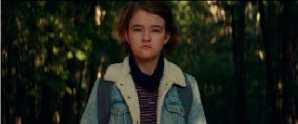
Figure 18. Scene 11, shot 1 (Reseacher’s processed data, 2020)
(11/2)
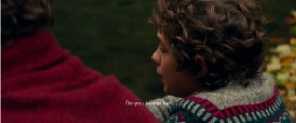
Figure 19. Scene 11, shot 2 (Reseacher’s processed data,
Sign(s) a) Regan’s angry look b) high trees c) jacket
a) Marcus b) water stream
2020)
a) Regan b) Bridge
(11/3)
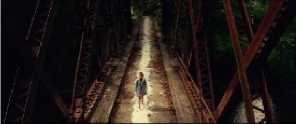
Figure 20. Scene 11, shot 3 (Reseacher’s processed data, 2020)
(11/4)

Figure 21. Scene 11, shot 4 (Reseacher’s processed data,
a) Marcus b) Serious look
2020) (11/5)
a)
|
Figure 22. Scene 11, shot 5 (Reseacher’s processed data, 2020) |
Evelyn’s blank face b) A couch c) A bed d) A window e) A doll on her hand f) dim sunlight |
|
(11/6) Figure 23. Scene 11, shot 6 (Reseacher’s processed data, 2020) |
a) Lee’s serious face b) dim sunlight |
|
(11/7) |
a) Evelyn |
|
∙ I |
crying b) dim sunlight |
|
Figure 24. Scene 11, shot 7 (Reseacher’s processed data, 2020) | |
|
(11/8) |
a) |
|
-λ γ{.Λ4⅛'..^ ’ ’ ^ k-eW*! |
Regan’s sad face b) A handmad |
|
Figure 25. Scene 11, shot 8 (Reseacher’s processed data, 2020) |
e cross |
|
(11/9) |
a) |
|
4 ' * |
Marcus’ side face b) Lee’s shoulder |
|
Figure 26. Scene 11, shot 9 (Reseacher’s processed data, 2020) | |
|
(11/10) |
a) The toy rocket |
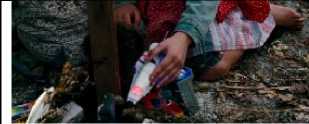
Figure 27. Scene 11, shot 11 (Reseacher’s processed data, 2020)
(11/11)

Figure 28. Scene 11, shot 11 (Reseacher’s processed data, 2020)
(11/12)
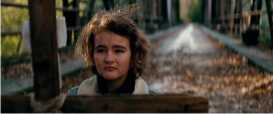
Figure 29. Scene 11, shot 12 (Reseacher’s processed data,
b) flowers and other toys on the ground c) Regan kneeling down
a) Lee’s frowning face b) Marcus’ head
a) Regan’s sad face
2020)
Table 4. Signs identification in scene 11
The signs—Regan’s angry look, trees, and jacket, tell the audience that she is going somewhere far from the house. The setting for Regan’s action is the bridge. The bridge and the handmade wooden cross sign signifies that—the bridge is at the same place where the creature attacked Beau. The setting for Marcus and Lee’s conversation is at the river as we see water stream. Meanwhile, the signs—window, a couch, a bed, and a doll on Evelyn’s lap signifies that he is at Beau’s room. The dim sunlight tells us that the time setting for the three actions is on the late afternoon. The director uses natural sunlight for the lighting of the three actions to give the reality to the audience.
The angry and sad looks from Regan show us that she blames herself for what happened to Beau. The blank look from Evelyn tells us that she is daydreaming.
When she suddenly cries, we know she reminisces her death son. The serious looks from both the father and the son tells us that they are having a deep conversation. The frown face from Lee when his son asks him if he loves Regan signifies a disbelief. He of course loves his daughter so much.
The editing uses cross cutting. The series of shot-reverse shots show the audience that are there are three different actions alternately. Here are the actions.
-
1. Regan is on the way to her brother’s grave and reminisces his death. She feels responsible of what happened.
-
2. Marcus and Lee talk about Regan. Marcus wants to clear the
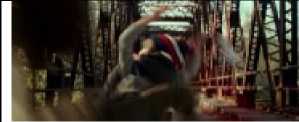
Figure 31. Scene 16, shot 2 (Reseacher’s processed data, 2020) (16/3)
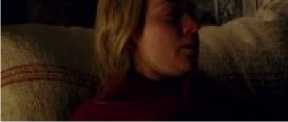
Figure 32. Scene 16, shot 3 (Reseacher’s processed data, 2020)
creature comes and attacks him
a) Evelyn wakes
up b) dim light
Table 5. Signs Identification in scene 16
misunderstanding between his sister and Lee. He wants her to feel the love from her father as Lee always seems to be cold to her. Regan mistakenly takes it as a sign that Lee blames her for what happened.
3. Evelyn is reminiscing Beau and keeps his spirit alive.
The series of the shots in this scene are sequentially organized. The shots of Regan and Evelyn’s during Marcus and Lee’s dialogue do not function as inserts. They represent a series alternating different actions. Therefore, the syntagma category in this scene is alternate syntagma.
Analysis of Scene 16
This is a short scene in which Evelyn dreams about Beau. Then she wakes up.
|
Scene/Shot Number |
Sign(s) |
|
(16/1) Figure 30. Scene 16, shot 1 (Reseacher’s processed data, 2020) |
a) Beau holding the toy rocket |
|
(16/2) |
a) The |

The setting of this scene is in the basement. The lighting is dim. It signifies that it is at the night. The editing process uses cut. The syntagma category is autonomous shot. This is the only autonomous shot found in the entire movie. It is in the scene where Evelyn has a nightmare about Beau who is attacked by the creature. This is a subjective insert showing Evelyn’s nightmare.
CONCLUSION
Based on the foregoing discussion, it can be seen that the Abbott family has to survive from a creature attack. This film teaches us how important family is. We can also see how the members of the family love each other from the movie. It is very touching to see how they are all struggling to survive from the creature’s attack.
In understanding the film, we have to know the elements of the film—one of them is mise en scene. When it is applied in the film, Mise en scene covers all visual aspects that appear on the film, such as settings, actors, settings, costumes, lighting and so on. Mise en scene
with cinematography and editing techniques will greatly affect the effect of the film's dramatization on the audience. It can also affects the audience to stay seated to know the development of the whole scene, or just leave the film when playing.
All of the film elements are arranged using Metz’ Grand Syntagma. There are syntagma category used in the film; i.e. autonomous shot, episodic sequence, scene, alternate syntagma, and descriptive syntagma. The signs that are presented in the film are arranged in such a way to show the audience about the family value in the movie. They signs, mise en scene and syntagma are all related to each other.
REFERENCES
Ajiwe, U. C., & Bature-Uzor, N. A.
(2015). From Script to Screen: A Semiotic Approach. American Journal of Social Science Research, 1, 63-70. Retrieved
from
http://files.aiscience.org/journal/a rticle/pdf/70330009.pdf
Amos, R. (1982). The Meaning of the Built Environment. Beverly Hills: The University of Arizona Press.
A Quiet Place (2018). (n.d.). Retrieved
January 31, 2019, from https://www.rottentomatoes.com/m /a_quiet_place_2018
Chandler, D. (2007). Semiotic The Basics. New York: Routlege.
Cui, D., Wang, Z., & A, A. R. (2017). Narrative Persuasion in Historical Film: Examining the Importance of Prior Knowledge,Existing
Attitudes, and Culture.
International Journal of
Communication, 12, 2751-2759.
DiVietri, P. J. (2019). What Are Family Values? Manassas: Family Life Institute.
El-Nawawy, M., & Elmasry, M. H.
(2018). The Signs of A Strongman: A Semiotic and
Discourse Anaysis of Abdelfattah Al-Sisi's Egyptian Presidential Campaign. International Journal of Communication, 10, 2275
2296.
Foucault, M. (1989). Foucault Live Collected Interviews 1961-1985. New York: Semiotext(e) Foreign Agents Series.
Herrmann, A. F., & Herbig, A. (2018). Returning to Kolchak:
Polymediated Narrative,
Discourse, and Supernatural Drama. International Journal of Communication, 12, 222-250.
HORROR FILMS. (n.d.). Retrieved January 31, 2019, from https://www.filmsite.org/horrorfilm s.html
John Krasinski on Casting Wife Emily Blunt in A Quiet Place [Video file]. (2018, October 17). Retrieved January 31, 2019, from https://www.youtube.com/watch?v =k9Fc6mu9t8I
LaPorte, N. (2018, July 11). Why horror movies are now more important than ever in Hollywood. Retrieved August 06, 2020, from https://www.fastcompany.com/901 99673/why-horror-movies-are-
now-more-important-than-ever-in-hollywood
McClintock, P. (2018, May 22). BoxOffice Milestone: 'A Quiet Place' Screams Past $300M Globally. Retrieved January 31, 2020, from https://www.hollywoodreporter.co m/heat-vision/a-quiet-place-screams-past-300m-at-global-box-office-1114103
Metz, C. (1974). Language Film A Semiotics of the Cinema. Chicago: The University of Chicago Press.
Pandey, S. (2012). Using Popular Movies in Teaching Cross-Cultural Management. European Journal of Training & Development, 36, 320-350.
Setiadi, E. M., & Kolip, U. (2012).
Pengantar Sosiologi. Jakarta: Kencana Prenada Media Group.
Shargi, M., Fayyaz, E., & Kausari, M. (2016). Semiotic Analysis of Prominent Myths of the Movie "Qeysar". Asian Social Science, 12, 93-99.
Yanti, Ni Kadek Winda. Semiotic Study of Symbol for Sandy The Mute Character in Rise of Guardian Movie. Humanis, [S.l.], v. 22, n. 2, p. 368-373, may 2018. ISSN 2302-920X. Available at: <https://ojs.unud.ac.id/index.php/ sastra/article/view/39515>. Date accessed: 05 aug. 2020.
Discussion and feedback